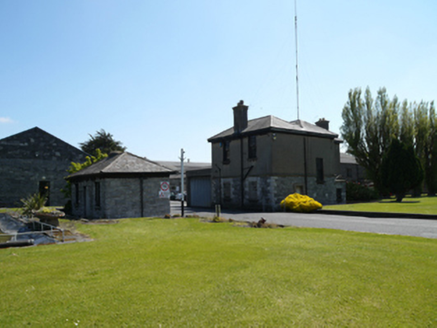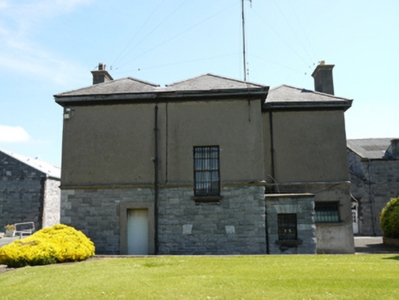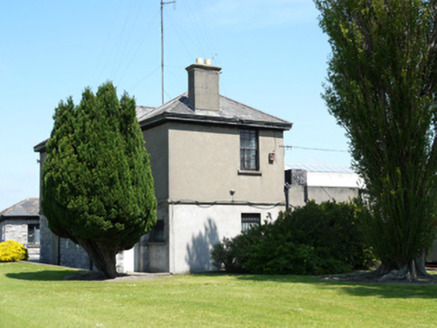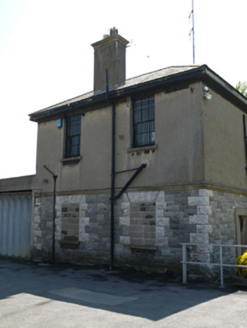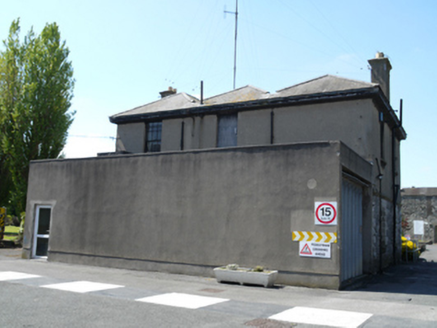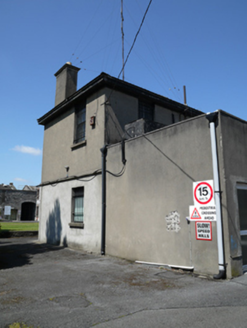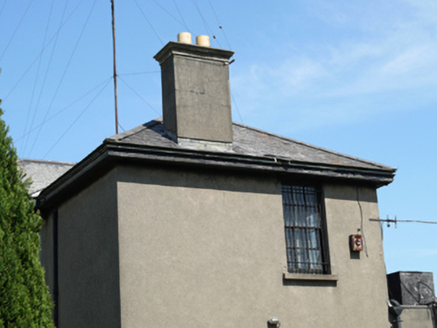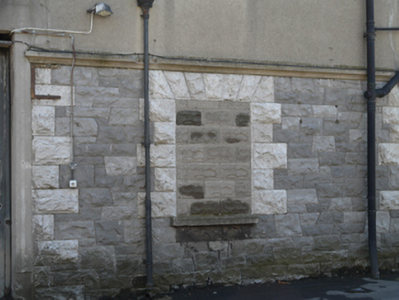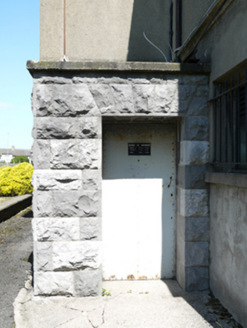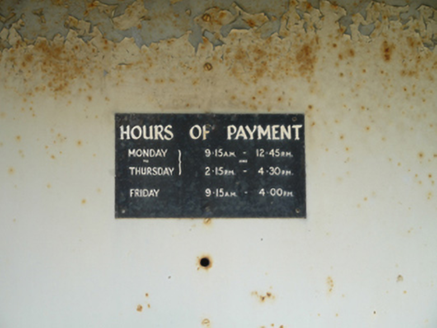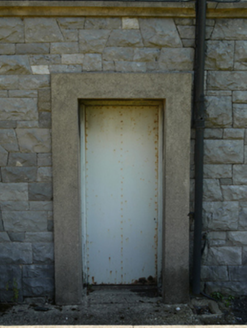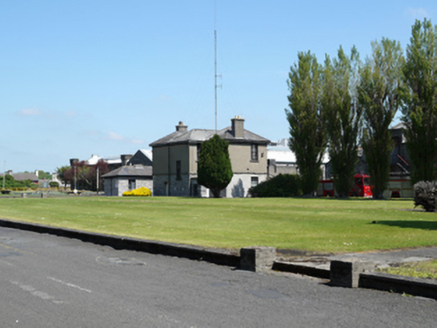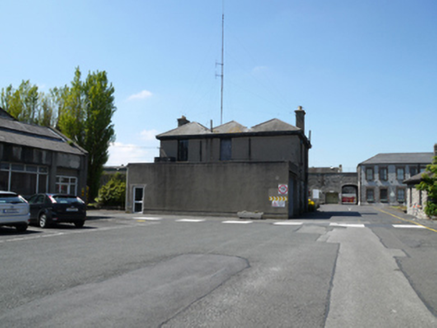Survey Data
Reg No
50080426
Rating
Regional
Categories of Special Interest
Architectural, Social
Original Use
Office
In Use As
Office
Date
1890 - 1910
Coordinates
311351, 233466
Date Recorded
29/05/2013
Date Updated
--/--/--
Description
Detached triple-pile three-bay two-storey office, built c.1900, having recessed bay to south end of front (west) elevation with flat-roofed entrance porch to re-entrant corner. Recent full-width flat-roofed single-storey extension to rear. Hipped slate roofs with rendered chimneystacks having cornice and clay chimney pots. Rusticated snecked limestone walls to ground floor, with rendered walls to first floor, ground floor south elevation, and extension. Square-headed window openings. Ground floor window openings having rusticated limestone surrounds with margined reveals and recent moulded concrete block infill. Six-over-six pane timber sash windows to first floor windows having external security bars. Square-headed door opening to front elevation having rendered surround and recent flush metal door. Square-headed door opening to porch, having rusticated limestone voussoirs and margined reveals, recent flush metal door.
Appraisal
The Inchicore Works was established in 1846 to maintain and construct rolling stock for the Great Southern & Western Railway. Now the headquarters for mechanical engineering and rolling stock maintenance at Irish Rail, it is the largest engineering complex of its kind in Ireland. The development of the Works was responsible for the transformation of this area from rural agricultural to an industrial village in the nineteenth century. The railway network transformed Ireland, linking remote areas in the country with urban settlements and ports, while promoting the commercialisation and industrialisation of larger towns. This building retains much of its early character, with heavily rusticated stonemasonry showing evidence of skilled craftsmanship which is typical of railway buildings. The use of two types of limestone for decorative effect is particularly notable. A smaller footprint is shown on earlier maps, and this building may have been extended both upwards and to the south, or it may have replaced an earlier building. The retention of the hand lettered sign to the door indicates its use as an office.
